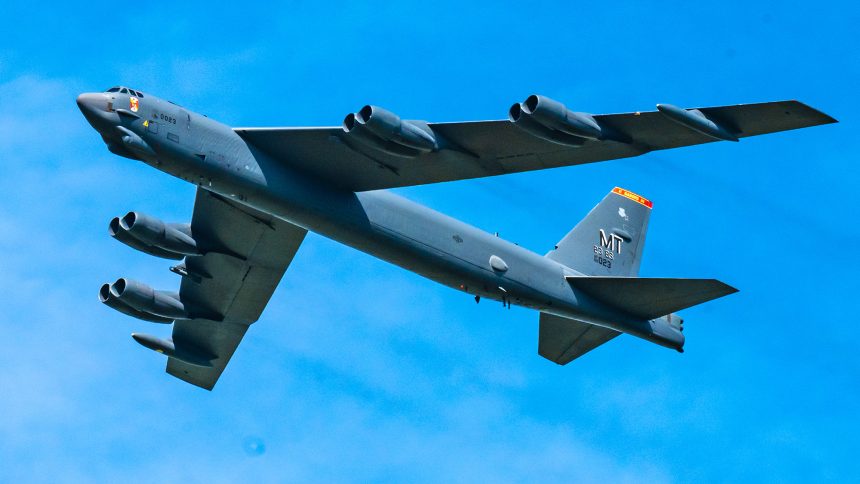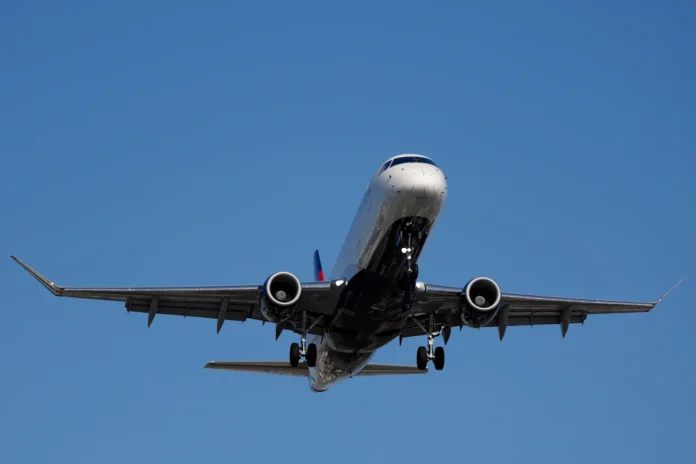SkyWest flight does “aggressive maneuver” to avoid B-52 military aircraft, in a dramatic midair incident that has sparked safety concerns and triggered investigations by both the Federal Aviation Administration (FAA) and the U.S. Air Force. The near-miss occurred on July 18 as SkyWest Flight 3788, operating as a Delta Connection from Minneapolis to Minot, North Dakota, was preparing to land at Minot International Airport.
According to passengers and airline officials, the pilot was forced to execute a sharp evasive maneuver—known as a “go-around”—after spotting a B-52 bomber on a converging flight path. The pilot later addressed the passengers, apologizing for the sudden jolt and explaining that the aircraft had not been warned about the presence of the military jet.
“For those of you on the right-hand side, you probably saw the airplane kinda sorta coming at us,” the pilot said in a video recorded by passenger Monica Green. “Nobody told us about it… Given his speed, it was a military aircraft. I thought the safest thing to do was to turn behind it. So, sorry about the aggressive maneuver. It caught me by surprise.”
The pilot added that Minot’s control tower lacks radar capabilities and relies on visual coordination, a fact that has raised questions about airspace management near military installations. Minot Air Force Base, located nearby, does have radar, but apparently did not communicate the B-52’s presence to civilian controllers.
SkyWest confirmed that the flight, carrying 76 passengers and four crew members, landed safely after the maneuver. The airline said it is investigating the incident and cooperating with federal authorities.
The U.S. Air Force acknowledged that a B-52 assigned to Minot AFB had conducted a flyover of the North Dakota State Fair that evening, but did not provide details about its altitude or flight path. “We are currently looking into the matter,” an Air Force spokesperson said.

The FAA has launched a probe to determine whether proper coordination protocols were followed between the military base and the civilian airport. Aviation experts say the lack of radar at smaller airports is not uncommon, but coordination between military and civilian controllers is essential to avoid such close calls.
“This is not normal at all,” the pilot emphasized in his announcement. “I don’t know why they didn’t give us a heads-up… It was not a fun day at work.” His candid remarks were met with applause from passengers, many of whom described the experience as frightening but handled professionally.
Green, who filmed the pilot’s announcement, said she felt the plane jolt to the right and saw grass outside her window instead of skyline. “I was so sick to my stomach that that was so close to happening,” she told reporters.
The incident has reignited debate over the safety of contract towers—civilian-run air traffic control facilities often staffed by retired controllers. There are currently 265 such towers in the U.S., and while they operate under FAA oversight, critics argue that they may lack the resources or coordination needed for complex airspace scenarios.
As investigations continue, the close call serves as a stark reminder of the importance of communication and coordination in shared airspace. With military and commercial aircraft increasingly operating in proximity, aviation authorities may need to revisit protocols to ensure passenger safety.


